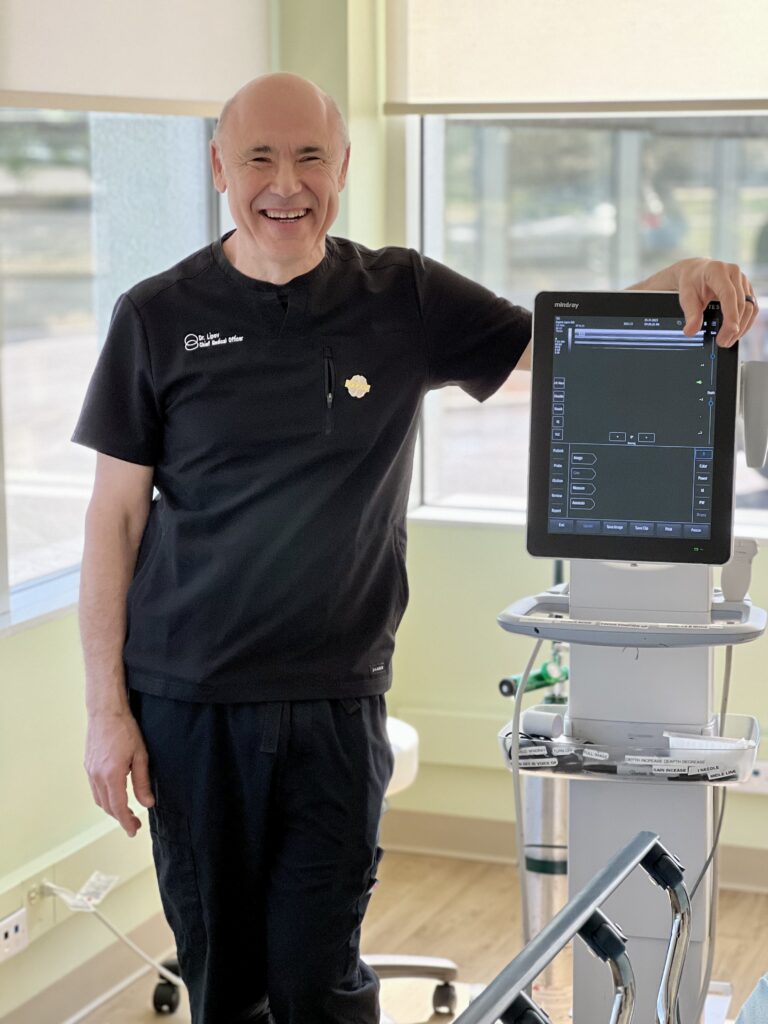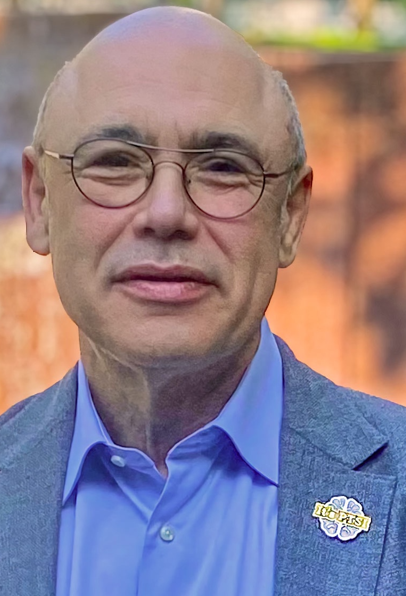Dr. Eugene Lipov is a Board-Certified Anesthesiologist & Pain Physician, Chief Medical Officer at Stella Center, founder of Erase PTSD Now!, author, speaker and
one of the world’s leading experts on the treatment of symptoms related to post-traumatic stress.
Truly, a pioneer in stellate ganglion (SGB) treatment for symptoms of PTSD, he knows first-hand that trauma can be all-consuming. Growing up with a veteran father stricken with PTSD, and a mother with debilitating depression who eventually took her own life, he truly understands the impact that trauma can have on the lives
of many. He’s made it his mission to help others relieve their traumatic suffering from PTSD and restore hope to their spirit.
In 2006, Dr. Lipov pioneered the use of Stellate Ganglion Block (SGB) for the treatment for post-traumatic stress disorder (PTSD) — a procedure that was initially approved by the U.S. Food and Drug Administration (FDA) in the 1950s for the treatment of certain types of pain and circulation disorders. In 2007, then US Senator Barack Obama wrote a letter to the U.S. Army in support of the procedure. Treatment is performed with an injection of medication into a collection of nerves at the bottom of the front side of the neck. It is most commonly known as a pain-relieving treatment, used to relieve hot flashes for menopause and cancer patients and treating shingles — and now, to alleviate symptoms related to post-traumatic stress disorder (PTSD). The procedure ‘reboots’ the body’s sympathetic system helping to reset a patient’s overreaction to stimuli — or ‘fight or flight’ response—by resetting the sympathetic nervous system and central nervous system to the pre trauma state.
After momentum slowly gained and as clinical trials of SGB to treat PTSD ensued, Dr. Lipov discovered that two injections on both sides of the neck into the stellate ganglion had the potential of yielding even better relief to folks suffering from PTSD. Today, his treatment protocol is now known as Dual Sympathetic Reset (DSR) and is available to everyone – civilians, soldiers, first responders, veterans, etc. Somewhere between 5000 -10,000 patients have been successfully treated with SGB or DSR and many are now reaching 10-15 years of relief.
In his recently released book, The Invisible Machine (April 11, 2023), Dr. Lipov shares a new understanding of trauma, the domino effect of physical illnesses that it can cause within the body, and how to reverse the symptoms.
FMM: You are a pioneer in stellate ganglion (SGB) treatment for symptoms of PTSD, and you know first-hand that trauma can be all-consuming. Share your background.
I grew up in Ukrainian SSR living with a veteran father stricken with PTSD, and a mother who suffered from debilitating depression eventually taking her own life. I witnessed firsthand, the physical, emotional and psychological impact that trauma can have on a person’s life.
In 2006, I discovered the use of Stellate Ganglion Block (SGB) for the treatment for post-traumatic stress disorder (PTSD) — a procedure that was initially approved by the U.S. Food and Drug Administration (FDA) in the 1920s to treat certain types of pain and circulation disorders. In 2004, I began using SGB to help women suffering from extreme symptoms of menopause who were also cancer patients. Today, I have updated the treatment protocol to Dual Sympathetic Reset (DSR) which still alleviates symptoms related to post-traumatic stress but warrants longer effectiveness. It has been 85% successful in ‘rebooting’ the body’s sympathetic nervous system and resetting a patient’s ‘fight or flight’ response and is available to everyone – civilians, soldiers, first responders, veterans, etc.

FMM: What are some of the misnomers about PTSD?
The term is generally accepted since its introduction in 1980, but many people have a problem with the term disorder meaning it is not real, that a person can simply “snap out of it.” It is often referred to as an invisible wound, however this type of wound is actually visible, if you have an advanced scanner that can see into the brain. The team at Stella and I conducted a survey from August 2021 to August 2022 where we asked 3000 people a series of questions regarding the term post-traumatic stress disorder. In the findings, which were just released in May 2023, we discovered that referring to PTSD as post-traumatic stress injury (PSTI) would reduce stigma and improve patients seeking care.
FMM: Tell us about Erase PTSD Now!
I started the organization in 2008 and am currently the medical advisor. The goal of Erase PTSD Now is to restore the lives of individuals, as well as affected families and communities, who suffer from post-traumatic stress. We designates our funding to the support of the dual sympathetic reset/stellate ganglion block treatment and are sponsoring research into trauma’s effect on the body and aging and how that can be reduced or even reversed.
FMM: In 2006, you pioneered the use of Stellate Ganglion Block (SGB) for the treatment for post-traumatic stress disorder (PTSD). What were your findings when you tested?
Stellate Ganglion Block and Dual Sympathetic Reset (DSR) are highly effective in treating the symptoms of trauma such as anxiety, hypervigilance, hyperarousal, insomnia, paranoia and at worst -homicidal and suicidal ideations. I am very pleased that my findings have been replicated by other institutions.
FMM: What are you seeing today in regard to PTSD with clients? How are you helping?
Most of my clients have been living with the symptoms of post-traumatic stress for quite some time and to witness the relief they experience after treatment is why I continue to do what I do. My entire mission is to reduce or eliminate the effects that trauma has on a person and restore hope to their spirit. I’m honored that people fly in from all over the world for this treatment.
FMM: Tell us about joining forces with world-renowned psychiatrist and pioneer in trauma science Dr. Frank Ochberg.
June is PTSD Awareness month and I have joined forces with world renown psychiatrist and pioneer in trauma science Dr. Frank Ochberg, to “re-name” post-traumatic stress DISORDER (PTSD) to post-traumatic stress INJURY (PTSI). Dr. Ochberg, best known for coining the term “Stockholm syndrome” served on the committee that defined PTSD back in 1980. While the term PTSD references post-traumatic stress as a “disorder”, it’s been proven to be a biological “injury” and should be referred to as PTSI, post-traumatic stress injury. Even the military community has expressed support for the name change.
FMM: What do you want the world to know about people who suffer from PTSD?
Post-traumatic stress is real, it is a physical injury that shows up on special brain scans. Many of the symptoms can be reversed and you do not need to live in PTSD hell.



